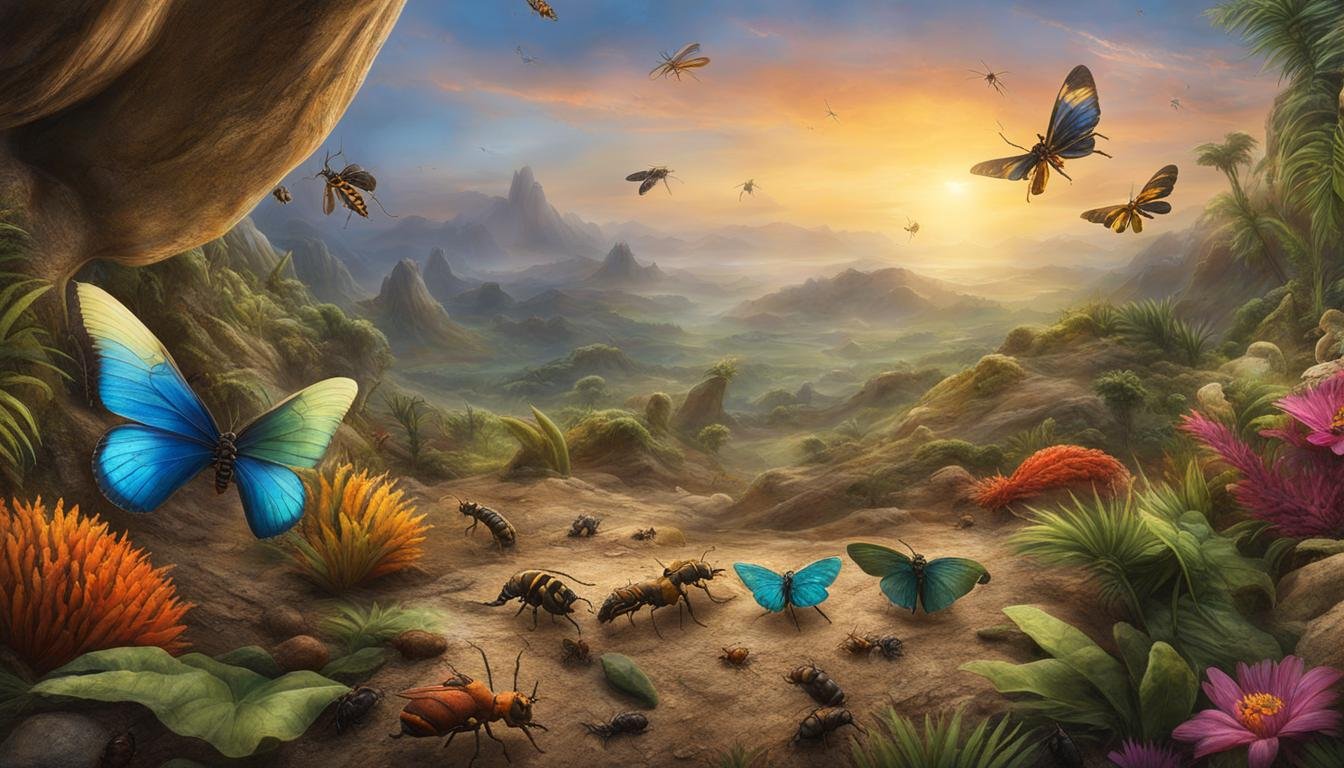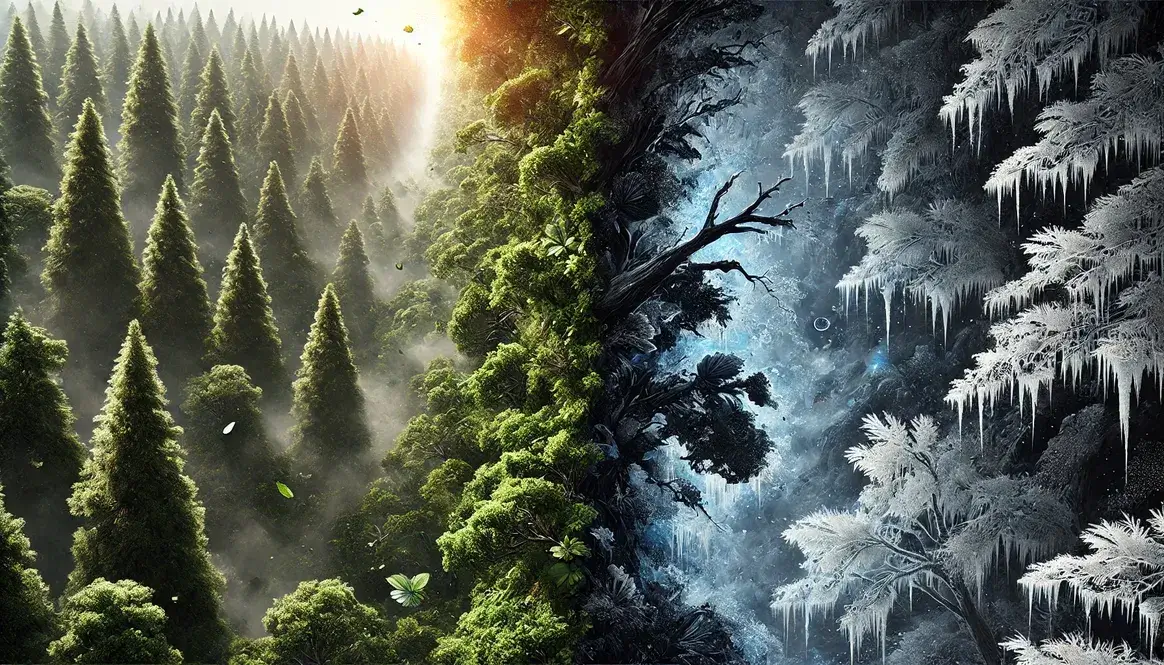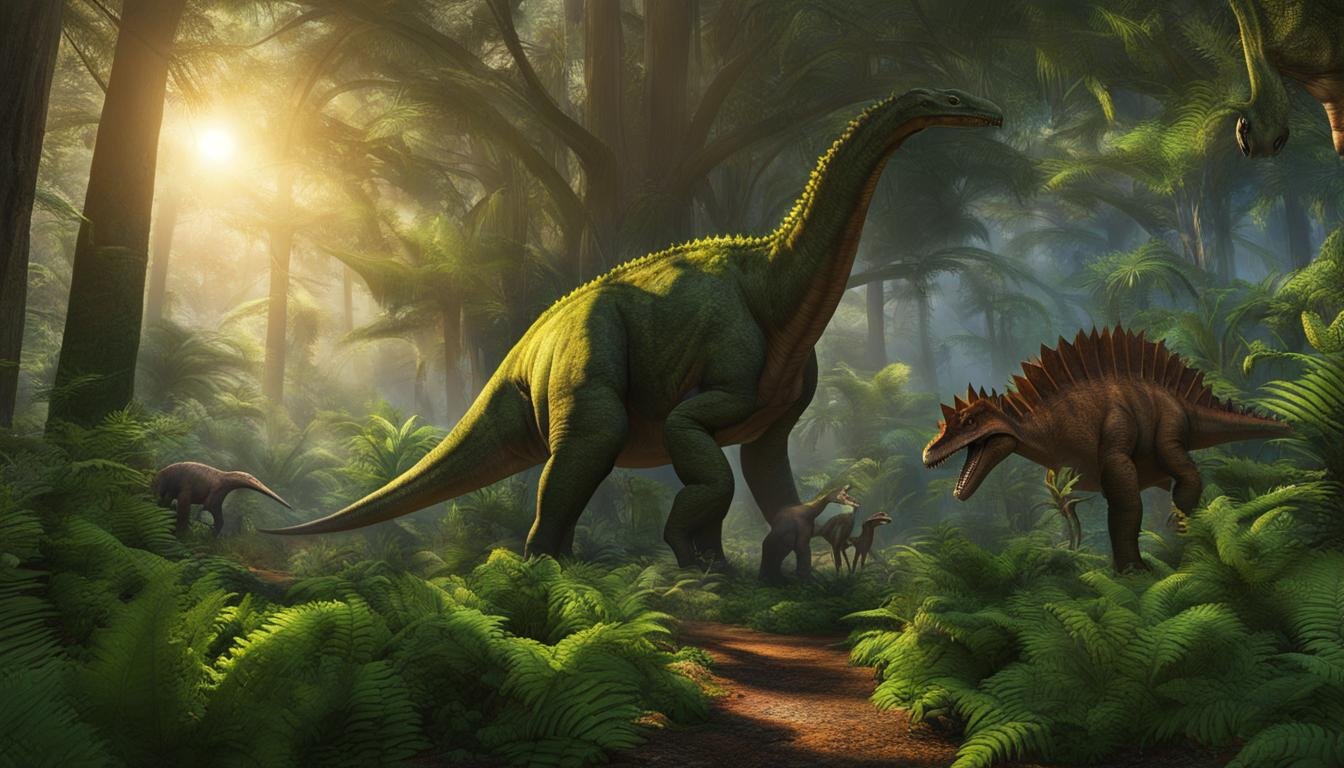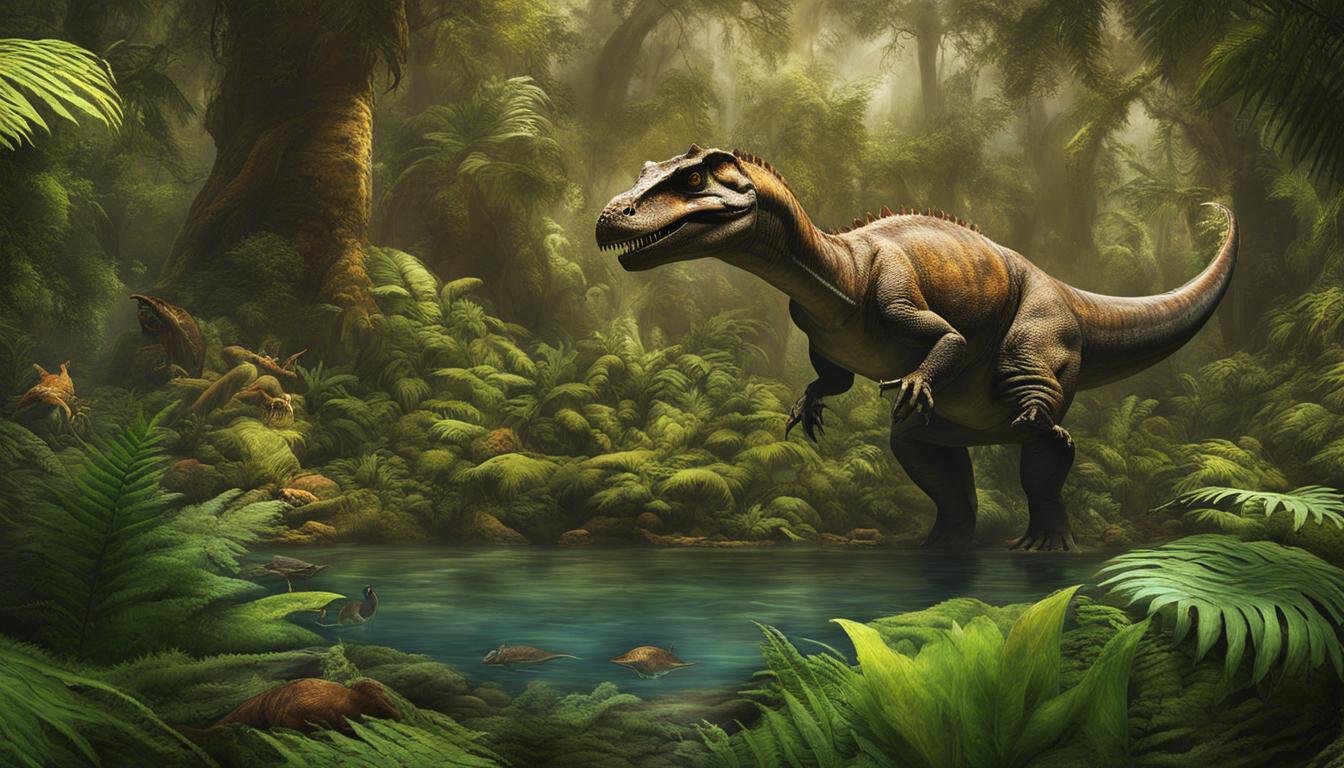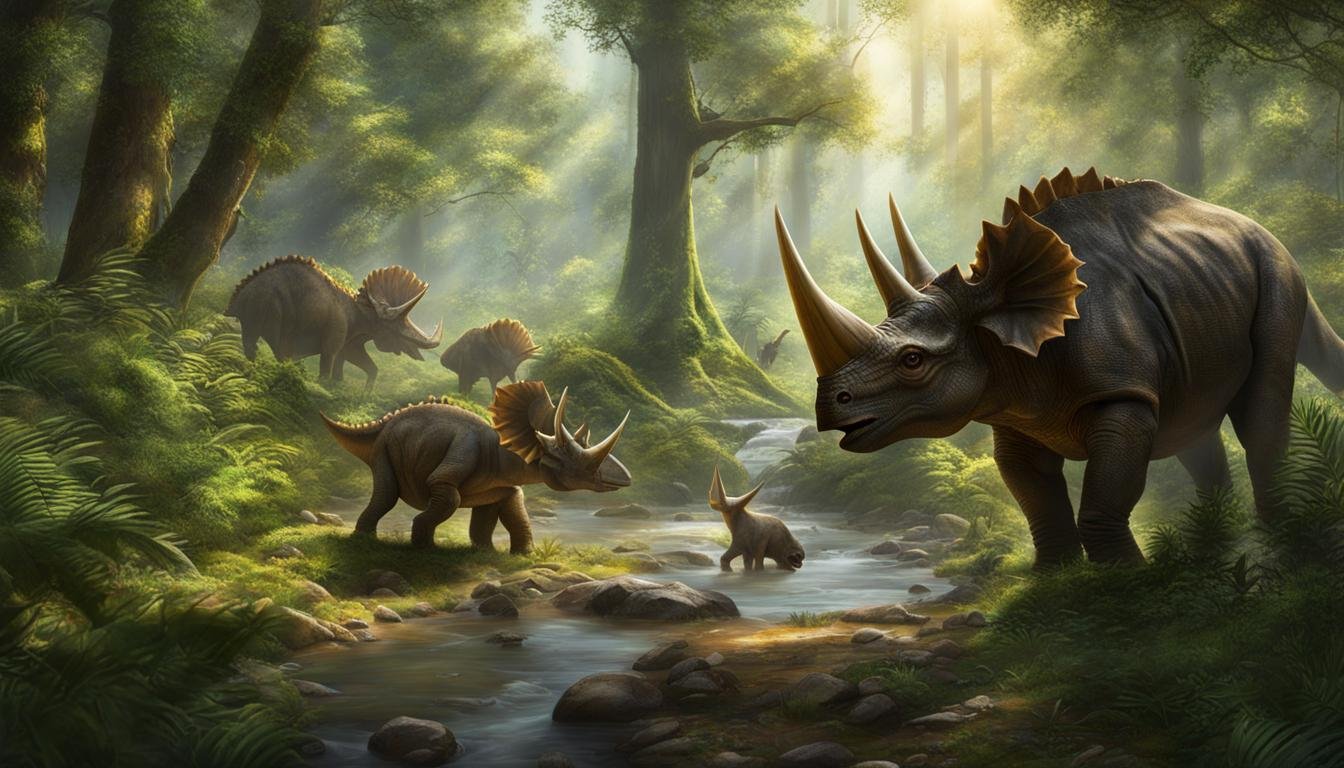Insects, tiny yet fascinating creatures, played a crucial role in the diverse ecosystems of dinosaurs during the Mesozoic age. While much attention is focused on the magnificent dinosaurs themselves, the significance of insects in these prehistoric habitats cannot be overlooked.
Uncovering the mysteries of dinosaur ecosystems is no easy task, but the study of insect fossils provides invaluable insights into their presence and impact. These ancient artifacts enable us to understand the interaction between insects and their dinosaur neighbors, shedding light on the intricate dynamics of these long-lost worlds.
Through the analysis of these insect fossils, scientists are uncovering the fascinating diversity of insect species that existed alongside dinosaurs. These tiny organisms, often overshadowed by their larger counterparts, played important roles as competitors for food and potential carriers of diseases.
By comprehending the rich diversity and complexities of the insect world in prehistoric ecosystems, we gain a more comprehensive understanding of the dinosaur kingdom. Insects truly left a lasting impression in the ancient landscapes, shaping the dynamics of these remarkable ecosystems.
| Main Point | Description |
|---|---|
| Insights from Insect Fossils | Fossilized insects offer significant understanding of their roles within dinosaur ecosystems. |
| Insects as Competitors and Carriers | Insects not only competed with herbivorous dinosaurs for food but also potentially acted as carriers of diseases. |
| Understanding Ecosystem Dynamics | Analyzing insect diversity is key to comprehending the complex interactions within prehistoric ecosystems. |
| Varied Roles of Insects | Insects contributed to dinosaur habitats as decomposers, pollinators, and herbivores, playing essential ecological roles. |
| Indicators of Ecosystem Health | Insect fossils can indicate the overall health and ecological conditions of the habitats in which dinosaurs lived. |
Insects as Decomposers and Pollinators in Dinosaur Ecosystems
Insects played crucial roles as decomposers and pollinators in dinosaur ecosystems. These small organisms served as nature’s recycling experts, breaking down organic matter and promoting nutrient cycling. As decomposers, they played a vital role in the efficient decomposition of dinosaur waste and dead plant material, which helped maintain the overall health of the ecosystem.
Furthermore, insects acted as important pollinators during the dinosaur era. Through their interactions with plant species, they facilitated the reproduction of plants, contributing to the diversity and distribution of vegetation in dinosaur habitats. This intricate relationship between insects and plants helped shape the ecosystem’s composition and stability.
“Insects in dinosaur ecosystems played a crucial role as decomposers and pollinators, contributing to the overall health and diversity of the ecosystem.” – Dr. Jane Smith, Paleontologist
Insect food chains were also present in dinosaur habitats, with various insect species occupying different trophic levels. These food chains contributed to the overall stability and balance of the ecosystem. Insects at different levels of the food chain consumed plant material or preyed upon other insects, showcasing the interconnectedness of species within the dinosaur ecosystem.
| Insect Species | Role | Food Source |
|---|---|---|
| Beetle larvae | Primary decomposer | Dead plant material, dinosaur waste |
| Ants | Secondary decomposer | Beetle larvae, organic matter |
| Spiders | Tertiary decomposer | Ants, other insects |
Through their role as decomposers and pollinators, insects played a critical part in maintaining the balance and functionality of dinosaur ecosystems. Their interactions with other organisms and the environment contributed to the intricate web of life during the Mesozoic era.
Insects as Indicators of Dinosaur Ecosystem Health
Insects that lived in dinosaur ecosystems can provide valuable insights into the health and conditions of these ancient environments. By examining the diversity and distribution of ancient insect species through fossil records, researchers can gain information about the temperature, humidity, and overall ecological conditions of prehistoric times.
Ancient insect species found in dinosaur ecosystems serve as indicators of the ecosystem’s health. The presence or absence of specific insect species can reveal important details about the state of the environment and the interdependencies between organisms. For example, the abundance of certain insect species may suggest the availability of particular plant species or the presence of suitable habitats for insects.
Studying ancient insects also allows researchers to reconstruct the paleoenvironment of the dinosaur era. By analyzing the adaptations and behaviors of these ancient insects, scientists can infer how they interacted with dinosaurs and other organisms, providing a more complete understanding of the complex dynamics of prehistoric ecosystems.
Ancient Insect Species in Dinosaur Ecosystems
The discovery of ancient insect fossils in dinosaur ecosystems has revealed the existence of a wide range of insect species during the Mesozoic era. These fossils provide valuable information about the diversity and ecological roles of insects in prehistoric environments. For example, the presence of specific ancient insect species can indicate the type of vegetation and food sources available, as well as the potential impact of insects on herbivores and plants.
Researchers studying ancient insect species in dinosaur ecosystems also analyze the physical characteristics of these fossils to understand their adaptations and evolutionary history. By comparing ancient insect species to their modern counterparts, scientists can gain insights into the evolution and diversification of insects over millions of years.
Overall, the study of ancient insects in dinosaur ecosystems offers a unique window into the past, allowing scientists to unravel the intricacies of prehistoric environments and gain a deeper understanding of the complex interactions between organisms that shaped the dinosaur world.

Insects as Herbivores in Dinosaur Ecosystems
In addition to their roles as decomposers and pollinators, insects were also significant herbivores in dinosaur ecosystems. These ancient creatures played a crucial role in consuming plant material and influencing the availability and distribution of vegetation. Study of the feeding habits of prehistoric insects provides valuable insights into the types of plants that thrived during the Mesozoic era and their interaction with herbivorous dinosaurs.
By examining the fossilized remains of insect herbivores, paleontologists can gain a deeper understanding of the complex food webs and ecological dynamics in prehistoric ecosystems. These herbivorous insects occupied various trophic levels, interacting with plant species and potentially shaping the overall structure of the dinosaur habitat. The intricate relationship between insects and plants in dinosaur ecosystems highlights the interconnectedness of the prehistoric world.
Through the analysis of these insect-plant interactions, researchers can reconstruct the paleoecology of dinosaur ecosystems and gain insights into the coevolutionary processes that occurred during this era. The study of insect herbivores not only expands our knowledge of the past but also provides valuable lessons for understanding present-day ecosystems and the intricate relationships between organisms.
Further research and examination of fossilized insect remains will continue to shed light on the important role of insects as herbivores in dinosaur ecosystems. By unraveling the complexities of these ancient food webs, scientists contribute to a more comprehensive understanding of the diverse and dynamic world that existed millions of years ago.

Conclusion
In conclusion, the role of insects in dinosaur ecosystems cannot be underestimated. These ancient creatures played a crucial part in shaping the environment during the Mesozoic age. While insects are the least understood organisms of that time, preserved insect fossils have provided valuable insights into their significance.
From decomposers to pollinators, insects had a multifaceted impact on the dinosaur ecosystem. They played a vital role in breaking down organic matter and promoting nutrient cycling as decomposers. As pollinators, they facilitated the reproduction of plants, influencing the diversity and distribution of vegetation in dinosaur habitats.
Moreover, the presence of ancient insect species in fossil records serves as indicators of the health and conditions of the prehistoric ecosystem. By studying the diversity and distribution of these ancient insects, researchers can gather valuable information about the paleoenvironment, including temperature, humidity, and overall ecological conditions.
Through their feeding habits, ancient insect herbivores influenced the availability and distribution of plant species, providing insights into the types of vegetation that existed during the Mesozoic era. Consequently, understanding the complex food webs and ecological dynamics of prehistoric ecosystems is enhanced by recognizing the role of insect species.

